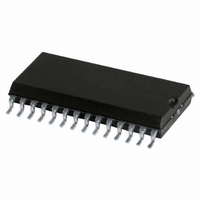TDA8024T/C1,118 NXP Semiconductors, TDA8024T/C1,118 Datasheet - Page 11

TDA8024T/C1,118
Manufacturer Part Number
TDA8024T/C1,118
Description
IC SMART CARD INTERFACE 28-SOIC
Manufacturer
NXP Semiconductors
Datasheet
1.TDA8024TTC1118.pdf
(29 pages)
Specifications of TDA8024T/C1,118
Package / Case
28-SOIC (7.5mm Width)
Controller Type
Smart Card Interface
Interface
Analog
Voltage - Supply
2.7 V ~ 6.5 V
Current - Supply
1.5mA
Operating Temperature
-25°C ~ 85°C
Mounting Type
Surface Mount
Maximum Operating Temperature
+ 85 C
Minimum Operating Temperature
- 25 C
Mounting Style
SMD/SMT
Lead Free Status / RoHS Status
Lead free / RoHS Compliant
Lead Free Status / RoHS Status
Lead free / RoHS Compliant, Lead free / RoHS Compliant
Other names
935271342118
TDA8024TD-T
TDA8024TD-T
TDA8024TD-T
TDA8024TD-T
Available stocks
Company
Part Number
Manufacturer
Quantity
Price
Part Number:
TDA8024T/C1,118
Manufacturer:
NXP/恩智浦
Quantity:
20 000
Philips Semiconductors
8.5
After a Power-on reset, the circuit enters the inactive
mode. A minimum number of circuits are active while
waiting for the microcontroller to start a session:
8.6
After power-on and after the internal pulse width delay, the
system microcontroller can check the presence of a card
using the signals OFF and CMDVCC as shown in Table 2.
2004 July 12
All card contacts are inactive (approximately 200
GND)
Pins I/OUC, AUX1UC and AUX2UC are in the
high-impedance state (11 k pull-up resistor to V
Voltage generators are stopped
XTAL oscillator is running
Voltage supervisor is active
The internal oscillator is running at its low frequency.
IC card interface
(1) Current.
(2) Voltage.
Fig.6
(V)
V o
6
4
2
0
Inactive mode
Activation sequence
0
I/O, AUX1 and AUX2 output voltage and
current as functions of time during a
LOW-to-HIGH transition.
(1)
20
40
(2)
t (ns)
FCE661
60
12
8
4
0
(mA)
I o
DD
)
to
11
Table 2 Card presence indication
If the card is in the reader (this is the case if PRES or
PRES is active), the system microcontroller can start a
card session by pulling CMDVCC LOW. The following
sequence then occurs (see Fig.6):
1. CMDVCC is pulled LOW and the internal oscillator
2. The voltage doubler is started (between t
3. V
4. I/O, AUX1 and AUX2 are enabled (t
5. CLK is applied to the C3 contact of the card reader (t
6. RST is enabled (t
The clock may be applied to the card using the following
sequence:
1. Set RSTIN HIGH.
2. Set CMDVCC LOW.
3. Reset RSTIN LOW between t
4. RST remains LOW until t
5. After t
If the applied clock is not needed, then CMDVCC may be
set LOW with RSTIN LOW. In this case, CLK will start at t
(minimum 200 ns after the transition on I/O), and after t
RSTIN may be set HIGH in order to obtain an Answer To
Request (ATR) from the card.
Activation should not be performed with RSTIN held
permanently HIGH.
changes to its high frequency (t
(t
internal oscillator (approximately 25 s).
were pulled LOW until this moment).
this moment.
the copy of RSTIN.
allows a precise count of CLK pulses before toggling
RST.
2
CC
HIGH
= t
LOW
OFF
rises from 0 to 5 V (or 3 V) with a controlled slope
1
5
, RSTIN has no further affect on CLK; this
+ 1.5
T) where T is 64 times the period of the
5
= t
CMDVCC
1
HIGH
HIGH
+ 7T).
5
, when RST is enabled to be
3
and t
0
).
Product specification
3
card present
card not present
5
; CLK will start at
= t
TDA8024
INDICATION
1
0
+ 4T) (these
and t
1
).
5
4
,
).
3















